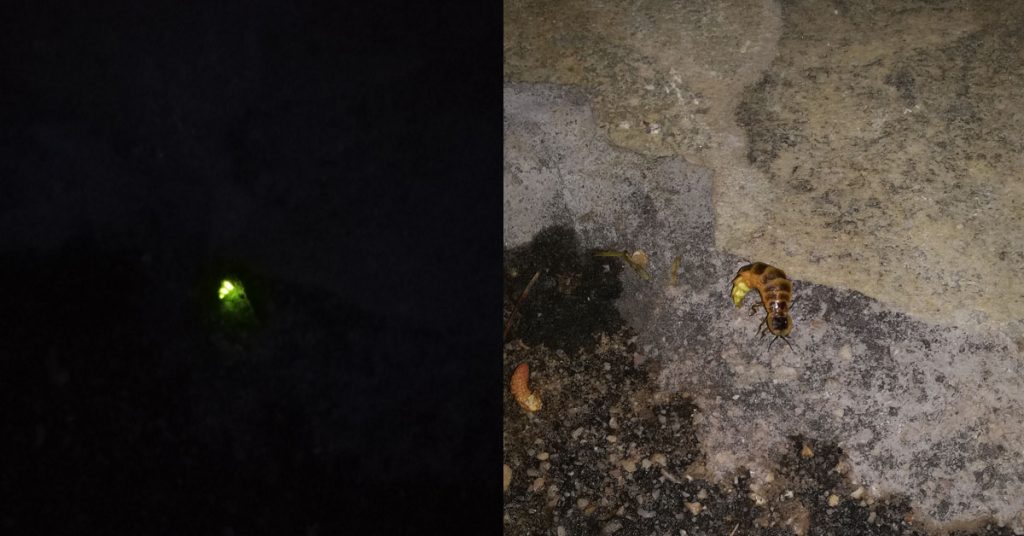As a child I often saw insects called fireflies or “kolofoties – κολοφωτιές” as they were called by the older ones. In the darkness, it was very impressive and almost eerie to see little lights among the grasses. Like stars falling to earth.
The fireflies, immediately attracted attention, as they were something unexpected. Light in the night that didn’t come from lamps, electricity, or candles like we humans are used to.
Bioluminescence, which is the chemical reaction that makes the back of a firefly glow, is what has scientists interested. This is because the chemical reactions that take place produce light without heat dissipation. Heat dissipation is a typical “by-product” of the technical methods that we humans use to produce light, e.g. electric light bulbs.
A few days ago, the appearance of a firefly in my garden brought back all these memories. But also questions! Such as:
What is the firefly insect?
What are fireflies?”: “What are fireflies?”: What are fireflies?”: “Fireflies are insects of the family Lampyridae and belong to the family Coleoptera. They use bioluminescence during twilight to attract mates or prey. There are about 2000 species.
Why do fireflies glow?
Fireflies are insects that use bioluminescence to produce natural light. This light helps them in two ways: a) To seek a mate (mate), b) To attract prey (prey).
Larvae, which have the ability to glow (even those living underground or underwater), use light to let predators know they are not tasty (they produce nasty, defensive steroids for protection).
Also, males glow to show their interest in females and the females will in turn respond to them so that the males can locate them. Each species flashes in a specific pattern.
Several studies have shown that female fireflies select mates according to certain characteristic light patterns. Increased rhythm and intensity of light have been shown to attract more females.
How do fireflies produce light?
Fireflies carry out a chemical reaction within their bodies that allows them to produce light.
This method is called bioluminescence.
A firefly has the ability to control the beginning and end of the chemical reaction by providing oxygen to the chemicals necessary to produce light. When oxygen is available, the photogenic organ lights up, and when it is not available, it goes out.
Recently, researchers have noticed that when the firefly light is off, no nitric oxide is produced. In this case, oxygen entering the photogenic organ is bound in the mitochondria, so it is not transported further into the photogenic organ. In contrast, when nitric oxide is produced, it binds to the mitochondria, allowing oxygen to enter the photogenic organ and combine with calcium, adenosine triphosphate (ATP) and the chemical compound luciferin in the presence of luciferase (a bioluminescence enzyme) to produce light. Because nitric oxide breaks down very quickly, as soon as the chemical stops being produced, the oxygen molecules are again trapped by the mitochondria and are not available for light production.
Why do we no longer see fireflies often?
Several factors may have contributed to the decline in fireflies such as light pollution and habitat destruction. If a field where fireflies live is paved over, the fireflies do not migrate to another field, they just disappear forever.
How do fireflies defend themselves?
Fireflies seem vulnerable, as the light they produce reveals their exact location to their enemies. If a predator attacks a firefly, it defends itself with a method called Reflective Bleeding. Their blood carries a chemical with a disgusting taste that in many cases removes the danger from their vicinity.
Sources
Firefly – Wikipedia
Biochemist
The enemies and friends of summer





